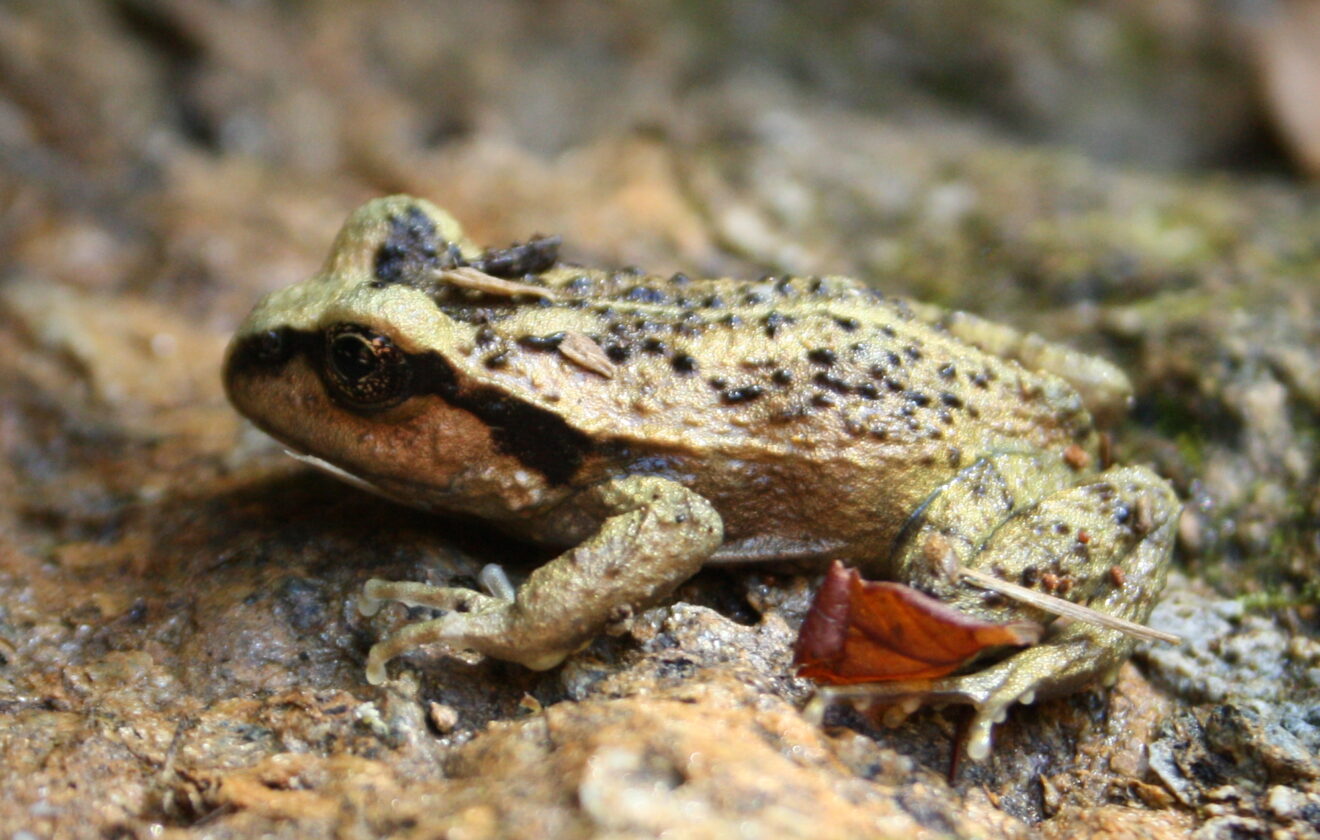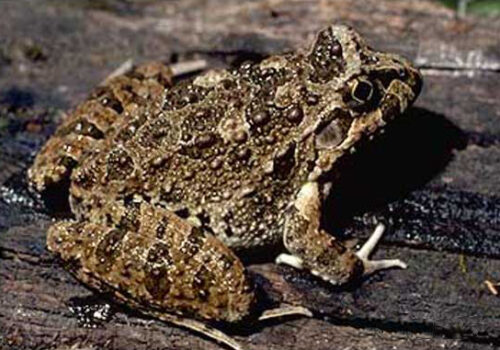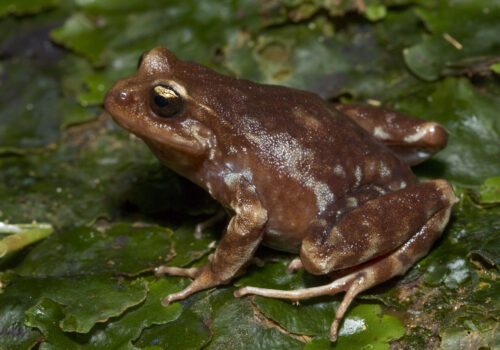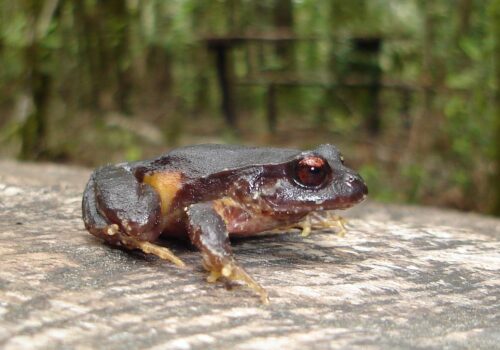- Alsodes valdiviensis: Discovering the Secret Lives of Valdivia's Hidden Frog
- Introduction: An Amphibious Hidden Gem
- Taxonomy and Classification
- Natural Habitat: Hidden Worlds of Southern Chile
- Physical Characteristics: Nature's Subtle Masterpiece
- Behavior and Life Cycle: Quiet Lives with Significant Impact
- Ecological Role: Essential Players in Balanced Ecosystems
- Threats and Conservation Status: Challenges in a Changing World
- Cultural and Scientific Significance: More than Just a Hidden Voice
- Conclusion: Advocating for a Hidden Jewel of Chile's Forests
Alsodes valdiviensis: Discovering the Secret Lives of Valdivia’s Hidden Frog#
Introduction: An Amphibious Hidden Gem#
Nestled within the verdant forests of southern Chile, the elusive frog Alsodes valdiviensis lives a largely unseen life, camouflaged beneath mossy logs and among leaf litter. Known commonly as the Valdivian Spiny-chest Frog, this amphibian remains relatively unknown beyond scientific circles, yet plays a crucial role in maintaining the delicate ecological balance of Chile’s temperate rainforests.
One fascinating detail about this species is its remarkably cryptic lifestyle. Unlike their vibrant, vocal cousins in more tropical climes, A. valdiviensis thrives in subtlety—quiet, cautious, blending seamlessly with its surroundings. Its subtle existence invites curiosity, urging nature enthusiasts and conservationists alike to peer deeper into the complexities of its life beneath the forest canopy.
Taxonomy and Classification#
Alsodes valdiviensis belongs to the family Alsodidae, a group of amphibians primarily native to the temperate forests and mountainous regions of southern South America. Within the genus Alsodes, this species holds a distinct identity, characterized by morphological and genetic traits unique to its lineage.
Closely related species within the genus include Alsodes monticola and Alsodes norae, frogs which also share the rugged forest habitats or mountainous streams of Chile. Taxonomically, studying the subtle distinctions in anatomy and genetics between these frogs helps conservation biologists better understand nuances in regional biodiversity.
Natural Habitat: Hidden Worlds of Southern Chile#
To encounter A. valdiviensis in its natural environment requires venturing deep into the lush temperate rainforest ecosystems that define southern Chile, particularly near Valdivia—hence its common name. Here, amidst ancient trees, dense foliage, and crystal-clear streams trickling down the mountainsides, this frog finds its refuge.
Forest Floors, Streams, and Mossy Microhabitats#
The Valdivian temperate rainforest offers conditions ideally suited for the secretive lifestyle of A. valdiviensis. These frogs prefer cool, humid habitats characterized by dense cover, abundant ground vegetation, and numerous freshwater streams that crisscross the landscape. Moisture is a crucial factor, not just for skin respiration but also critical for breeding, tadpole development, and overall survival.
Life unfolds quietly beneath decomposing logs, amid carpets of vibrant moss and lichen-covered stones. These microhabitats provide thermal insulation, steady moisture levels, and protection against predators, creating a sheltered universe where this shy amphibian can thrive with minimal disturbance.
Physical Characteristics: Nature’s Subtle Masterpiece#
Alsodes valdiviensis is modest in appearance compared to the brilliantly colored poison dart frogs or the boldly patterned tree frogs some readers might know. However, its subtle traits offer refined adaptations crucial for survival. Adults typically measure around 4–6 centimeters in length, and their robust yet compact bodies are built predominantly for life amidst leaf litter and underbrush.
Their dorsal coloring reflects the hues found naturally on the forest floor—a combination of earthy browns, tans, and olive greens with occasional mottled patterns that effectively camouflage them among leaf debris. Interestingly, the physical adaptation that grants the name “Spiny-chest” refers to a series of tiny keratinous spines found predominantly in males, believed to aid during amplexus (the mating embrace) or possibly used in territorial skirmishes.
Evolved over millennia, such cryptic coloration and specialized spines are not mere decorative elements but essential tools that influence mate selection, predator avoidance, and reproductive success.
Behavior and Life Cycle: Quiet Lives with Significant Impact#
Unlike many frog species known for loud choruses or extravagant nocturnal displays, A. valdiviensis keeps its vocalizations subtle and infrequent, primarily communicating through quiet, low-frequency calls audible only within short distances. This understated behavior aligns seamlessly with their stealthy existence beneath the forest leaf canopy.
Breeding Behavior and Tadpole Development#
Breeding typically occurs during the moist, cooler months, encouraged by increased rainfall and rising stream levels. Males call softly from concealed locations beneath logs or vegetation near slow-moving streams, serenading potential mates with gentle tones.
Females lay small clusters of gelatinous eggs in protected streamside pools or shallow slow-moving waters, attaching them strategically beneath submerged leaves or to secure vegetation. Tadpole development occurs in these protected aquatic environments, allowing young amphibians to mature safely sheltered from many terrestrial predators. Metamorphosis from tadpole to adult frog represents a delicate but critical phase marking transition to a terrestrial existence among the leaf litter.
Parental care, though subtle, demonstrates remarkably evolved behaviors among certain Alsodes frogs. While specific documentation for A. valdiviensis is limited, closely related species exhibit guarding behaviors, suggesting potential similar protective instinct within this species—further research may confirm this intriguing aspect of their life history.
Ecological Role: Essential Players in Balanced Ecosystems#
The role of any amphibian species in its ecosystem rarely grabs headlines; however, their contributions remain substantial and invaluable. Amphibians such as A. valdiviensis hold essential places in local food webs, serving both as predators and prey. Feeding predominantly on tiny invertebrates—ants, beetles, spiders, and mites—they help regulate insect populations, thereby maintaining the fragile equilibrium within the forest ecosystem.
Equally important, frogs act as critical prey items for various birds, mammals, and larger amphibians, playing a foundational role in the biodiversity chain. Moreover, amphibians often indicate ecosystem health; their presence and abundance signal environmental quality, highlighting potential ecological problems such as pollution, habitat fragmentation, or climate variations.
Threats and Conservation Status: Challenges in a Changing World#
Like countless amphibian species globally, A. valdiviensis faces severe threats requiring immediate attention from conservationists and policymakers. Habitat loss remains the primary threat, with logging activities, urban expansion, and agricultural encroachment gradually fragmenting and diminishing suitable habitats. Such environmental changes reduce population connectivity and significantly impact species survival.
Additionally, climate change creates unpredictable shifts in precipitation, temperature regimes, and seasonal patterns, significantly influencing breeding and development success. Larger global phenomena such as chytrid fungus also pose potential threats, although the presence and extent of disease impact on this particular species still demands extensive research.
Currently listed as Data Deficient by the IUCN Red List, the status of A. valdiviensis underscores the considerable gaps still existing in scientific understanding—gaps conservation-oriented professionals urgently aim to address through increased field studies, habitat monitoring, and population assessments.
Cultural and Scientific Significance: More than Just a Hidden Voice#
While not embedded prominently in Chilean folklore, the Valdivian forests themselves hold profound cultural value for the nation’s people. Representing an integral part of Chilean natural heritage, amphibians like A. valdiviensis symbolize the interconnectedness and hidden beauty inherent within these ecosystems.
Scientifically, species like A. valdiviensis serve as critical research organisms helping biologists understand evolutionary adaptations to temperate rainforest ecosystems, their response to climatic shifts, and the ecological dependencies that define southern Chile’s biodiversity.
Conclusion: Advocating for a Hidden Jewel of Chile’s Forests#
The delicate presence of Alsodes valdiviensis within the undergrowth of southern Chile’s Valdivian forests serves as both mystery and muse—reminding us of the countless life forms existing quietly alongside human activity. Protecting this species demands deeper appreciation, greater ecological literacy, and tailored conservation actions.
As enthusiasts, educators, and conservationists, our role includes celebrating and preserving these unseen marvels. By advocating for the preservation of forests, promoting careful stewardship, and supporting amphibian research programs, we help conserve hidden wonders like the Valdivian Spiny-chest Frog.
Let our shared fascination deepen our commitment to conservation, ensuring that future generations can likewise marvel at the subtle charms, adaptations, and quiet lives of species that quietly—and critically—influence the health of our natural world.


















